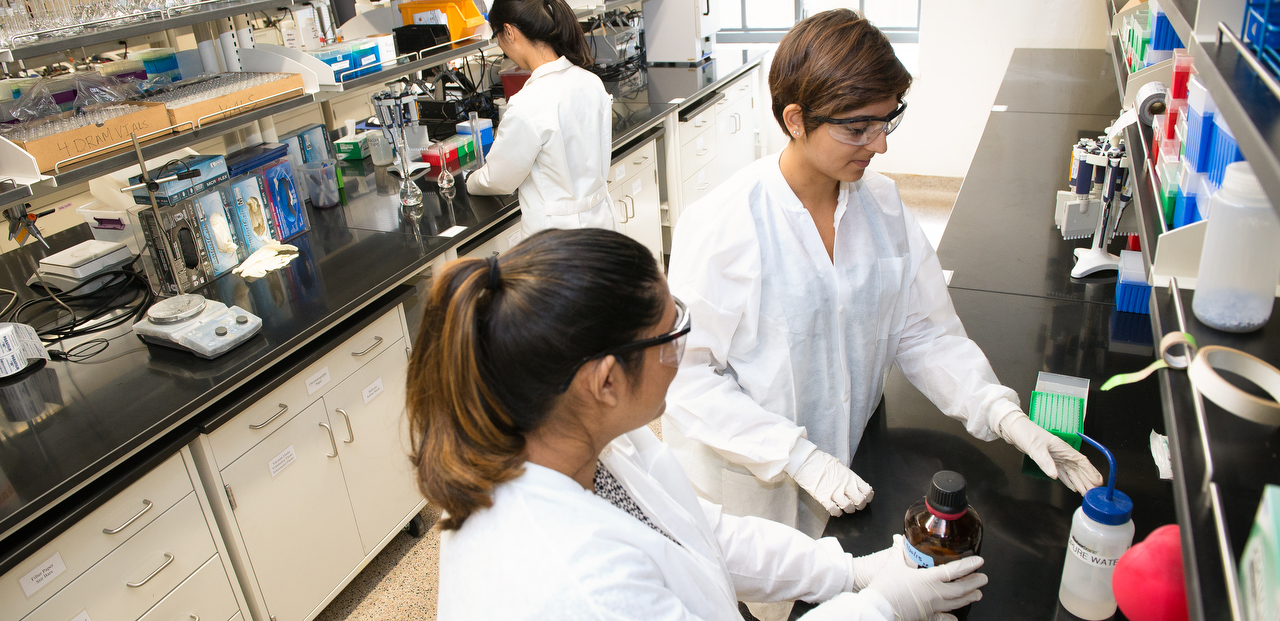The High School Research Initiative (HRI) offers “inquiry-driven science” modules for the entire state of Texas. Using the expertise developed in the implementation of the yearlong HRI open inquiry-collaborative research hybrid course (HRI SEPA 2016-21), the new modules will be codesigned with teachers and UT faculty around a content core (e.g., organic chemistry, water chemistry, infectious disease drug discovery, etc.) and raise awareness of the relevance of and career opportunities in biomedical, behavioral, and clinical research. The comprehensive modules will be NGSS- and TEKS-aligned, and provide teachers guidance to facilitate the development of student ideas into testable questions, safely design experiments, collect and analyze data, and support authentic practices (e.g., science fair participation).
At UT-Austin’s College of Natural Sciences, students dive into scientific research right from the start through the Freshman Research Initiative (FRI). Now high school students can do the same. The pioneering HRI program provides high schools students the opportunity to initiate and engage in real-world research experience with faculty and graduate students at The University of Texas at Austin.
The NIH SEPA-funded HRI program is the result of partnerships between nationally recognized UT-Austin programs: UTeach, and FRI. UTeach specializes in STEM teacher preparation, while the FRI specializes in undergraduate research experiences.
The HRI seeks to leverage the benefits of these partnerships, obtaining similar outcomes in the FRI and UTeach. That is - FRI students are more likely to complete science and math degrees, graduate within 6 years (Rodenbush, et al, CBE-Life Sciences Education, 2016), and (we believe) graduate better prepared to pursue advanced degrees or jobs in industry. Similarly, UTeach is a model for science education, professional development, and outreach.
Like the freshmen at the FRI, students in the HRI course are engaged in authentic student-driven research, a cornerstone of project-based learning. Throughout each module students are paired with UT research educators to work on inquiry-driven science lessons.
The HRI Professional Development program will include a 4-week teacher Summer Training developed around the inquiry-driven science modules and steeped with science content knowledge and skills, statistics, ethics, Sheltered Instruction practices, and project management training, as well as opportunities to participate in an authentic research experience with a UT faculty member. Ongoing professional development and activities (e.g., monthly meetings, opportunities for reflection, access to mentor teachers, etc.) will be provided to provide support throughout the year.
Significance and Innovation
The significance of the HRI is that it capitalizes on the power of research experiences as a STEM recruitment and retention tool. HRI includes other design elements that contribute to student success: mentoring, networking, college readiness programming, academic skill building, and a transition from more guided to more independent work. These factors are especially important for the success of students who are the first in their families to attend college or are from backgrounds underrepresented in STEM fields, which are the target population of HRI. HRI is designed to meet the needs of schools as outlined by the Texas legislature, and to align with state science education standards as well as the Next Generation Science Standards, especially related to the practices of science.
When the Project reaches full scale, 15 teachers and 300 students from rural districts will work with 7 UT scientists and 14 undergraduate mentors each year on 7 inquiry-driven science modules in a hybrid classroom-distance learning environment that fosters open-inquiry science and activities of a scientist to build persistence in health sciences. Without significant cost to the school, the HRI will provide a proof-of-concept that high school students can participate in a variety of research at scale. Evaluation of HRI is designed to provide rigorous evidence of its efficacy, especially the extent to which high school students, who are inherently a more diverse group of students than undergraduates, reap the same benefits as undergraduates from participating in science research.
















